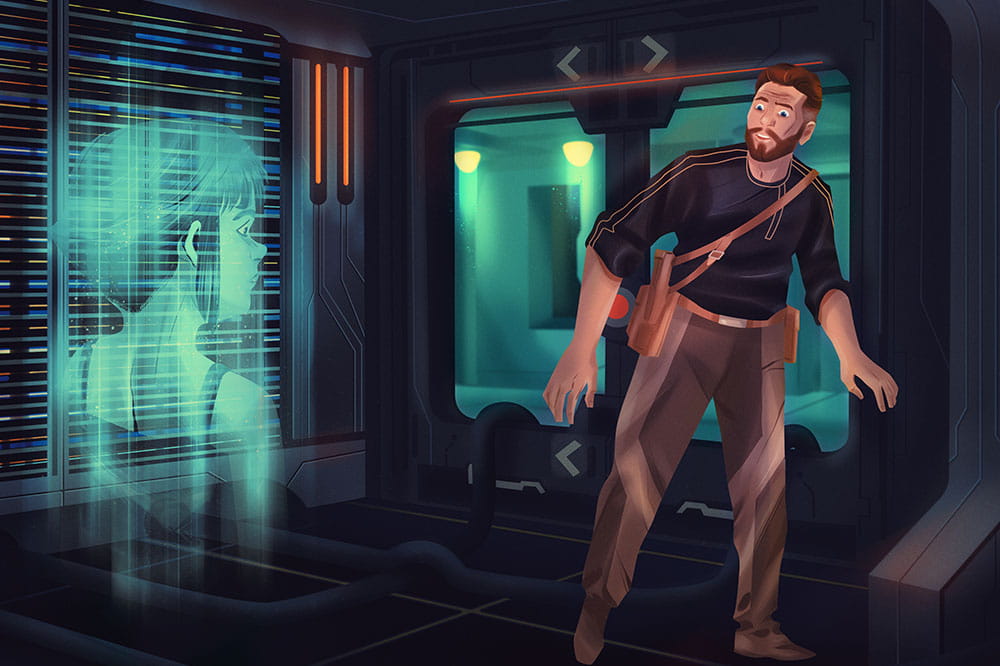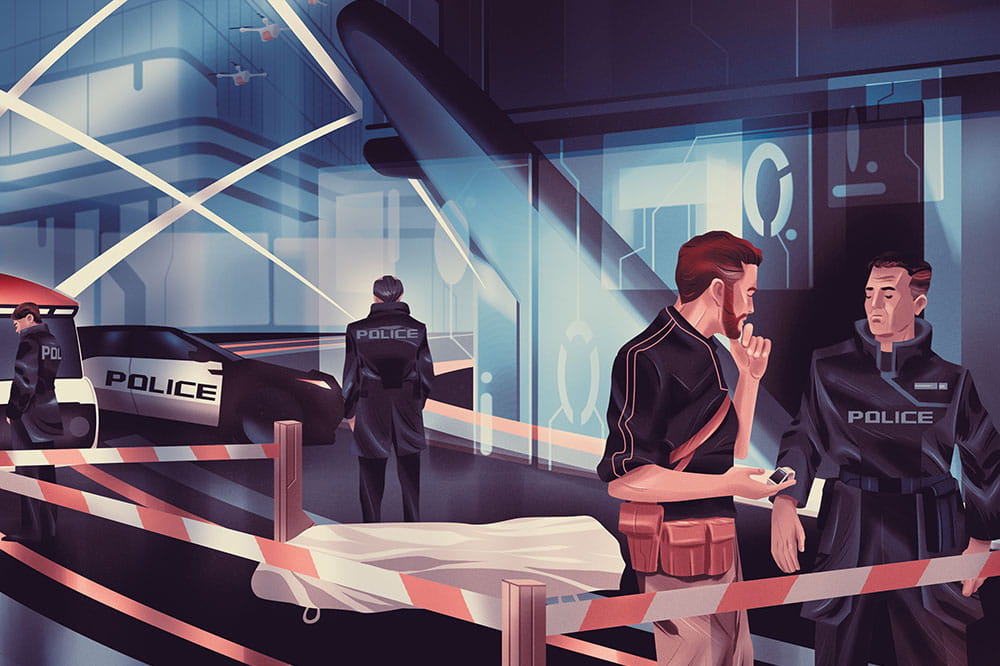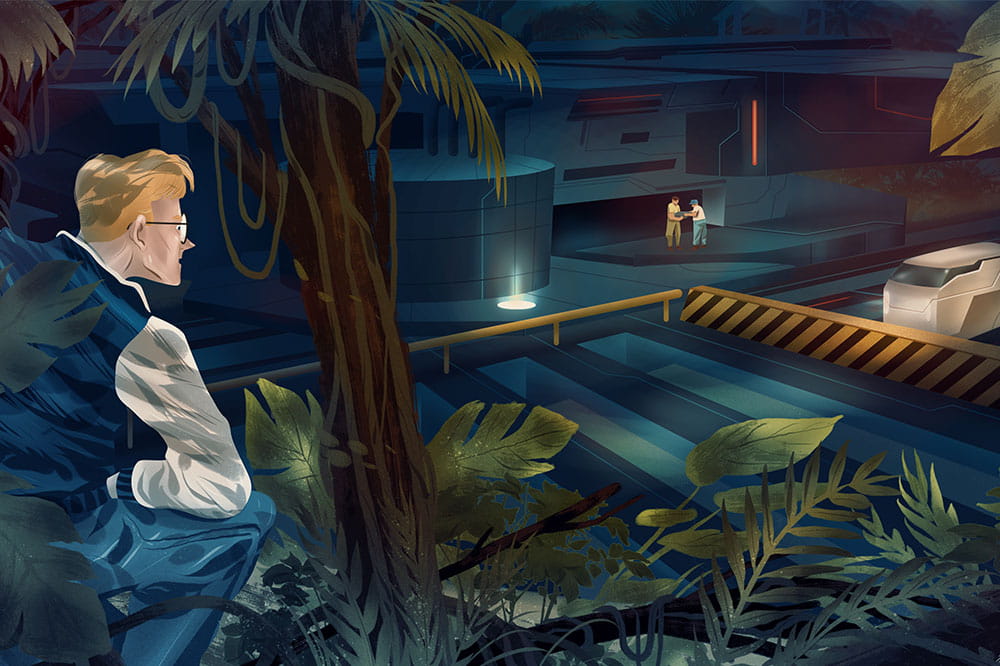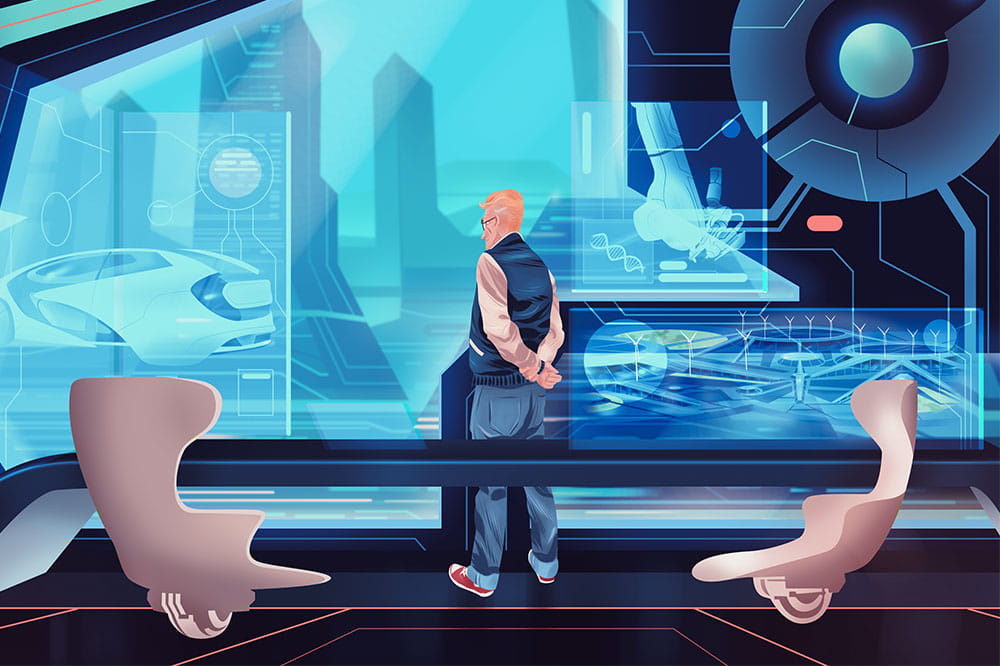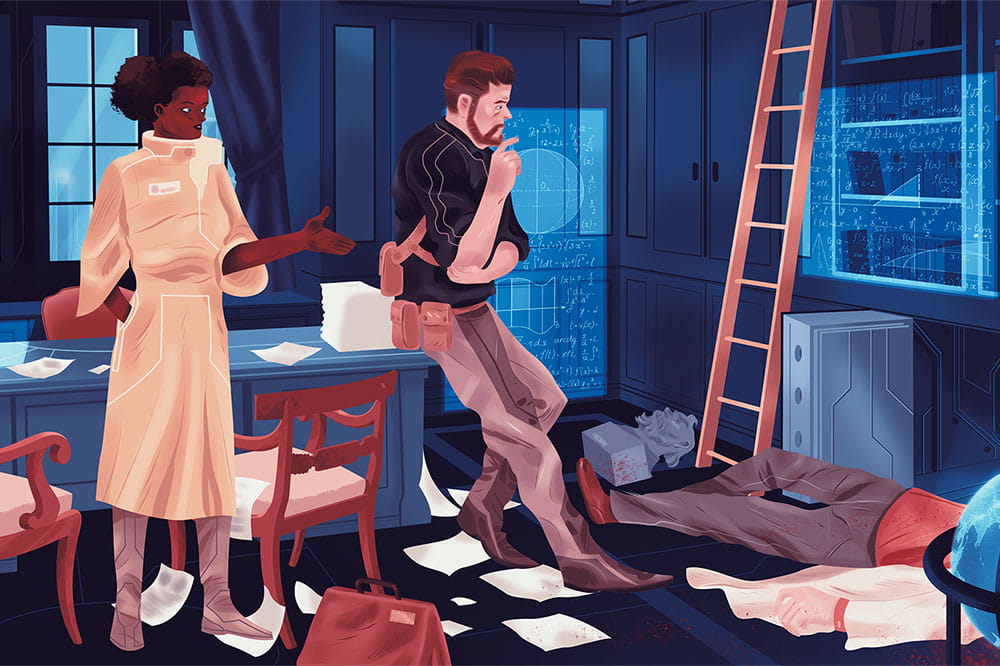Obtain news and background information about sealing technology, get in touch with innovative products – subscribe to the free e-mail newsletter.

19.04.2018 | Story
Traveling Into the Future
Each month, you can find a new chapter in the ESSENTIAL science-fiction series “Trip into the Future.” In a fictional world where the goals of the Paris climate accord have become a reality, Nero, a blogger, explores the potential technological and social transformation resulting from it. The goal of the series is to play with fully different visions as creatively as possible and to take the reader along on a thought experiment: What might our future look like – and why is it important to us?
Short Science Fiction Stories: Part 10
The Cycle of Molecules
One of the enjoyable aspects of a blogger’s life is that the destinations of some research trips are vacation spots – which I wouldn’t have necessarily expected this time. For my reporting on material recycling, I traveled into Lusatia – a region in eastern Germany whose landscape had been marred by decades of extensive brown coal strip mining. But the hotel that I checked into was far from provincial or dismal; It was a brand-new resort with a view of a deep-blue lake, complete with a sand beach. If I hadn’t had to prepare for my reporting the next day, I would have sat in the sun at the beach bar and indulged in some people-watching. Instead I activated the augmented reality function of the windowpane. A thin layer of organic light-emitting diodes attached between the windowpanes enhanced the view outside with a look into the past. A jagged, cratered landscape lay above the lake. The sight of the onetime strip mines was eerie. I turned it off immediately and looked at the present again. “The recycling of a landscape – it does fit the topic,” I thought to myself.

Experts Worried About a Shortage of Raw Materials
But now to work. I decided to start the reporting with a look at the challenges of the closed loop economy. “Avar, can you put together a few reports on raw materials during the years after the Paris climate conference?” I asked my AI assistant. “Sure, Nero,” she answered. A moment later, she summed them up: “At the time, the media were reporting on a great many reusable materials that remained unused. I also have many reports on the export of valuable waste materials, which were shipped here and there, at give-away prices, and on a huge garbage patch in the Pacific. On the other hand, experts worried about a looming shortage of certain metals and rare earths — and that there could be constraints on the technological progress of electric motors, batteries and fuel cells, along with renewable energy and electric vehicles, as a result. I’ll just assemble a few sources for you. Die Zeit wrote this on November 26, 2017: ‘The demand for lithium, rhenium, terbium and dysprosium in particular could more than double by 2035. The same is true for germanium, cobalt, scandium, tantalum, neodymium and praseodymium…’” “All right, Avar, thank you very much,” I said, stopping her. I preferred to look at this on the display. One thing was already clear: The raw material loop that I was to learn about the next day solves two problems at once: First, disposal, and second, the shortage of resources. With this out of the way, I thought I would just sit in the evening sun.

Recyclable Materials
The next morning, a small, driverless electric bus brought me from the hotel to a huge recycling facility, which was built nearby in a military training area. I met Mandy, the operations manager, at the reception building, and we drove on a separate passenger lane through the complex in a small electric two-seater, which reminded me of the robotaxis in San Francisco. An endless chain of electrically powered containers drove on the main road. “In terms of delivery volume, this is largest recycling facility in the world,” Mandy said, not without pride. “The oldest part, which has produced raw materials for batteries for quite a long time, is out in back.” I am not particularly interested in that portion since the recycling of batteries is old hat. But just to be polite, I let her explain it to me. “First the batteries are dismantled and then the cells are melted down in a smelting furnace,” Mandy said. “Due to the different melting points and densities, we can separate the fluid metal phases from each other very effectively.” Another process step is required for the lithium, which is still used in many batteries. Incidentally, the quantity of cobalt has recently begun to decline, I learned, because the first cobalt-free batteries have worn out and now are coming to the facility.
Disassembling Into Molecular Components
We visited the pilot facility at the end of the tour, and I found it much more exciting. This is where electric and electronic scrap is disassembled automatically into its molecular components. “Sorting by hand has its limits,” Mandy said, and then pointed to several large cylinders that we were approaching. “That is why we start out by separating the metal from the scrap in these bioreactors with the help of microorganisms. This is a bit like making soup,” she said, grinning. “Then we use various selection and filtering techniques to concentrate the individual metal molecules that are dissolved in an alkaline solution.” It is a good thing that Avar is recording everything, I thought to myself. But I continued to try to concentrate on what she was saying. “In the final step, the metals are separated with the help of an electric field and the metal ions separate galvanically.” At the end of the process, the individual metals are back in pure form and can be sold on the global market.
The cycle of molecules – that’s something that would ensure a supply of raw materials, I thought to myself when I was back at the Lusatian beach resort. “Avar, please take this down: It is not just a completely renewable energy system that is important for a CO2-neutral world. It is also the sustainable availability of materials.”
More Stories About Future Files
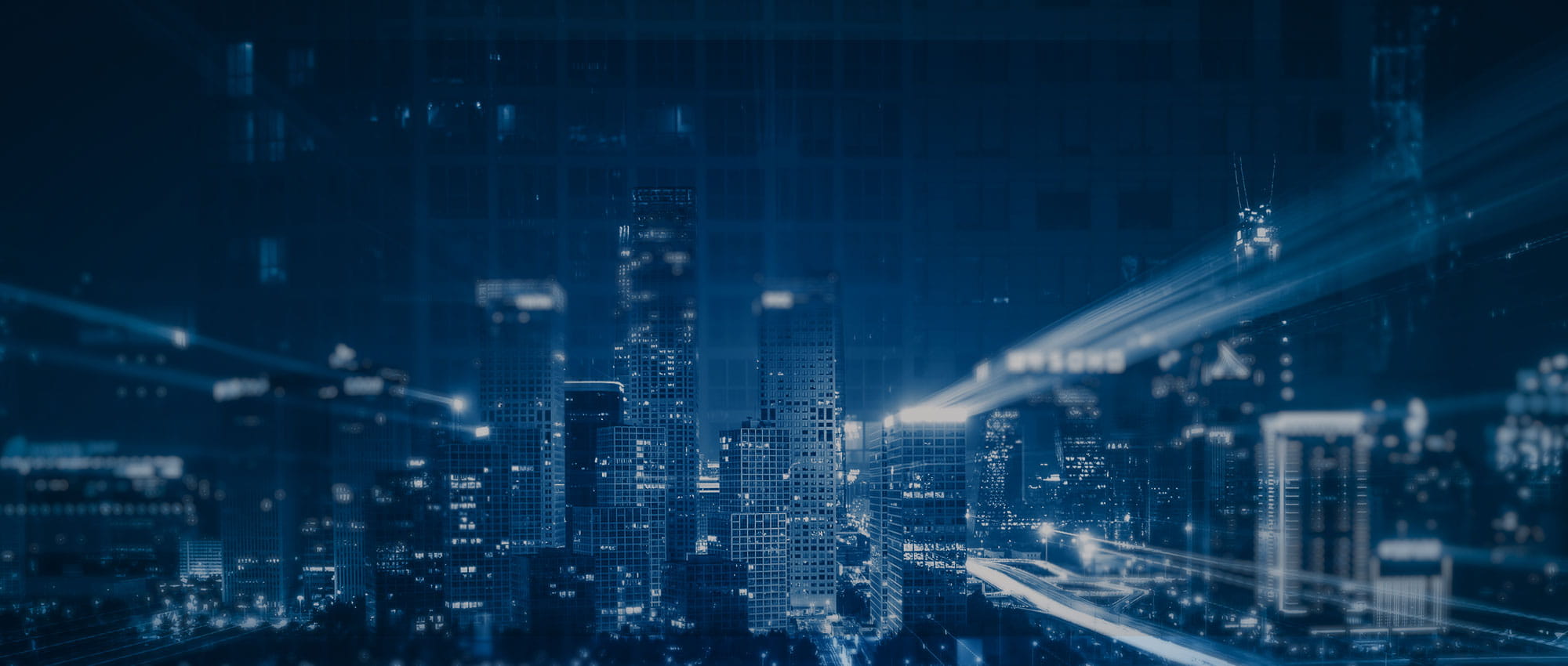
Join Us!
Experience Freudenberg Sealing Technologies, its products and service offerings in text and videos, network with colleagues and stakeholders, and make valuable business contacts.
Connect on LinkedIn! open_in_new